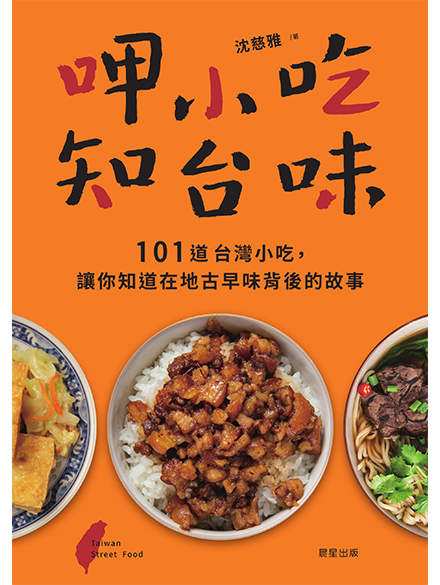Geographical location and historical background have created a diverse food culture in Taiwan. This book pairs a historical-cultural perspective with a wealth of food photos to unravel the origins of Taiwan’s local dishes.
Taiwan is known as a food paradise. Its natural topography surrounded by the sea and unusual historical background have preserved the essence of its Chinese culinary heritage but also infused it with foreign flavors. Before Taiwan developed such a diverse food culture, its material economy produced little wealth. Many people were agricultural laborers who ate snacks to boost their energy levels between regular meals. Most of these easy-to-eat, low-priced meals were small in size and high in calories.
As times have changed and cooking techniques have been refined, these affordable snacks eaten by ordinary people have transcended their original purpose of satisfying hunger. Incorporating elements of the past and present, they have become delicacies sought after by local gourmets and foreign tourists. As an explorer who loves food, the author explores the origins of Taiwan’s local snacks from a perspective both historical and cultural.
Each of the book’s six chapters covers a different category of classic Taiwanese snacks: “Rice & Noodles”, “Soups”, “Sweets”, “Savory bites”, “Drinks”, and “Souvenirs”. Each chapter gives detailed descriptions of the history, cooking methods, ingredients, and places to find these delicious dishes. Among them are beef noodles, a must-try for tourists coming to Taiwan; nutritious milkfish soup; stinky tofu, which is a favorite taste of home for Taiwanese living abroad; Jiufen’s famous Old Street taro ball dessert; the popular frozen treat mango shaved ice; traditional teatime ox-tongue-shaped puff pastries, and many more. Each dish is accompanied by mouthwatering photos and a small “snack box” inset sharing more food facts.
Eat a Snack, Taste Taiwan systematically classifies these delicacies for everyday people, considering multiple aspects such as local culture and history, local connections, and differences in regional ingredients. Readers can explore the origins of classic Taiwanese snacks and taste the many flavors of a diverse food culture.
